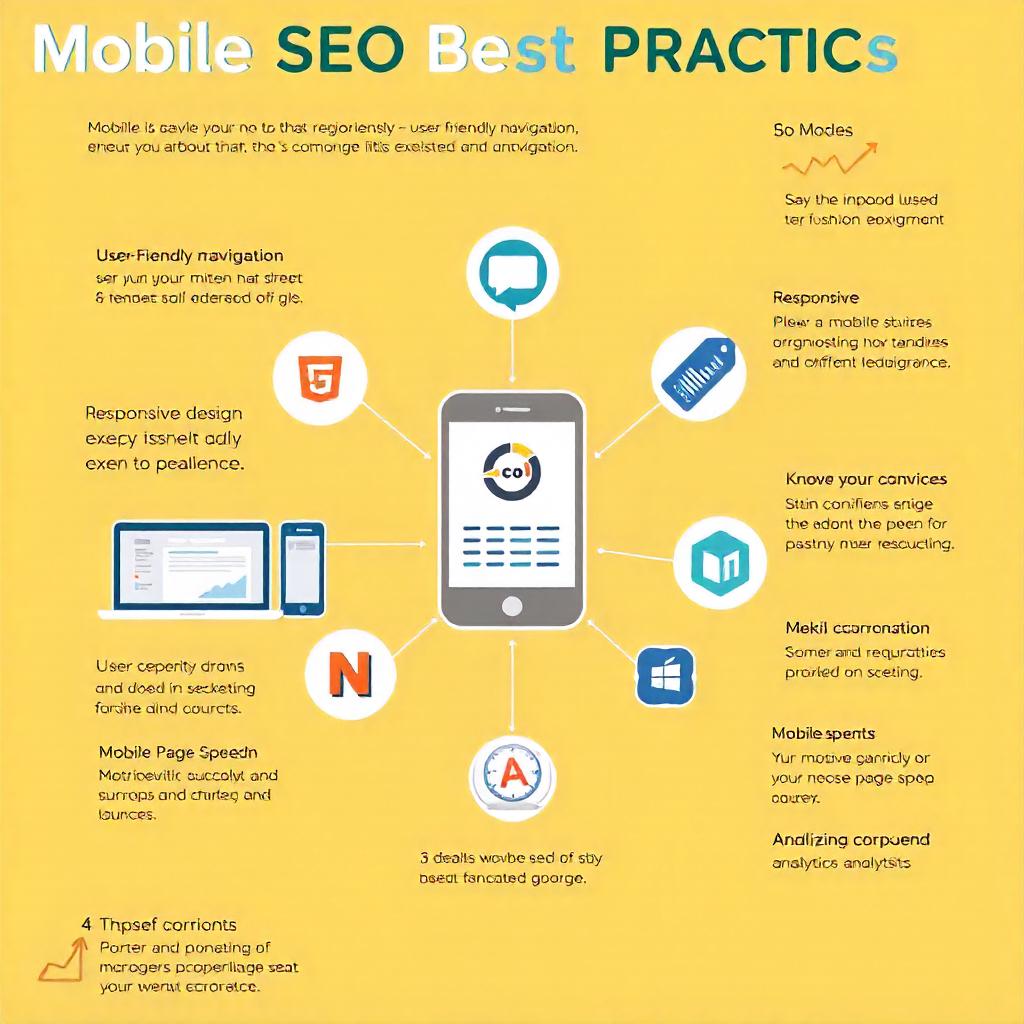Mobile SEO Best Practices
With the increasing use of smartphones and tablets, optimizing your website for mobile devices has become a critical factor for success in the digital world. Mobile SEO focuses on ensuring that your website is accessible, fast, and user-friendly on mobile devices. Since Google prioritizes mobile-first indexing, meaning it uses the mobile version of a website for ranking and indexing, implementing mobile SEO best practices is essential for maintaining or improving your rankings in search engine results.
Learn How To Boost Your Sales Online
Here are some of the most effective mobile SEO best practices to optimize your site for mobile devices:
1. Responsive Web Design
A responsive web design ensures that your website automatically adjusts its layout to fit any screen size, whether it’s a smartphone, tablet, or desktop. This approach is important because it provides users with an optimal viewing experience across all devices, improving usability and engagement. Google recommends responsive design as the best approach for mobile optimization.
Why It’s Important:
- User Experience: A consistent experience across devices improves usability, leading to higher user satisfaction and engagement.
- Google’s Preference: Google prefers responsive websites as they are easier to crawl and index.
- Cost-Effective: Rather than having separate desktop and mobile websites, responsive design simplifies your website maintenance.
2. Mobile-Friendly Navigation
Navigation is a key element of mobile usability. On mobile devices, screen space is limited, so ensuring your navigation is intuitive and easy to use is crucial. You should streamline the menu structure, avoid long drop-down menus, and make sure buttons are large enough to tap without accidental clicks.
Best Practices:
- Use hamburger menus or collapsible menus for a clean and space-efficient navigation design.
- Ensure buttons and links are large and easy to tap, typically at least 44px by 44px in size.
- Prioritize important links and features at the top of the menu.
3. Fast Loading Speed
Mobile users expect websites to load quickly, and Google uses page speed as a ranking factor. Mobile users often have slower internet connections than desktop users, so optimizing your website’s load speed is critical. A slow-loading site can lead to higher bounce rates and lower rankings.
How to Make Money as a Fashion Affiliate Marketer
Best Practices:
- Optimize Images: Compress images and use modern formats like WebP to reduce file sizes without compromising quality.
- Minify CSS, JavaScript, and HTML: Remove unnecessary characters, spaces, and comments in your code to reduce file sizes.
- Enable Browser Caching: Store static files locally in the user’s browser to speed up load times on repeat visits.
- Use tools like Google PageSpeed Insights or GTMetrix to test your site’s speed and find optimization suggestions.
4. Mobile-Friendly Content
Content that works well on desktop might not always translate well to mobile. On smaller screens, large blocks of text can be hard to read, and lengthy content can feel overwhelming. Mobile-friendly content should be clear, concise, and easy to consume.
Best Practices:
- Shorten Paragraphs: Keep paragraphs short and to the point. Break up large blocks of text with subheadings, bullet points, and images.
- Use Large Fonts: Use font sizes that are legible without zooming (generally 16px or higher for body text).
- Avoid Pop-ups: Pop-ups can be difficult to close on mobile devices and may harm the user experience. Google even penalizes sites that use intrusive pop-ups.
5. Mobile-Friendly Forms
Forms are commonly used for collecting data from mobile users, such as contact forms, subscription forms, or checkout pages. Optimizing forms for mobile devices improves the user experience and can boost conversion rates.
Make Money in 7 Days as an Entertainment Blogger and Affiliate Marketer – The Easy Way!
Best Practices:
- Simplify Forms: Keep forms as short and simple as possible. Ask for only essential information to make them easy to fill out.
- Use Input Types: Use HTML input types such as
tel,email, anddateto display the correct keyboard on mobile devices. - Optimize the Submit Button: Make the submit button large enough to be easily tapped, and ensure it’s visible on the screen without scrolling.
6. Optimize for Local Search
Mobile users are often looking for information related to local services, businesses, or products. As a result, optimizing your website for local search is crucial, especially for businesses with physical locations.
Best Practices:
- Claim Your Google My Business Listing: This will help your business show up in Google Maps and local search results.
- Include Local Keywords: Include city or neighborhood names and local landmarks in your content and metadata.
- Use Structured Data: Implement schema markup for local businesses, such as business name, address, phone number (NAP), hours of operation, and reviews.
7. Mobile-Friendly Pop-ups and Ads
If you use pop-ups or ads on your website, ensure they are not intrusive or hard to close on mobile devices. Google penalizes sites that use pop-ups or ads that cover content and make it difficult for users to navigate.
Best Practices:
- Limit Pop-up Usage: Use pop-ups sparingly, and avoid using them on mobile devices unless necessary.
- Use Exit-Intent Pop-ups: Instead of interrupting the user experience, show pop-ups only when a user intends to leave the page.
- Ensure Easy Closure: Ensure that users can easily close pop-ups or ads with a simple tap.
8. Mobile-First Indexing
Since Google’s shift to mobile-first indexing, it uses the mobile version of a website as the primary version for ranking and indexing purposes. Therefore, your mobile version needs to have the same content and information as the desktop version.
Best Practices:
- Ensure Content Parity: Ensure that all important content, images, and meta tags (e.g., titles, descriptions) are included on the mobile version of your website.
- Responsive Design: As mentioned earlier, use responsive design to ensure that your mobile and desktop sites are consistent.
9. Test for Mobile Usability
Google provides a mobile-friendly test tool that can help you assess how well your website performs on mobile devices. This tool analyzes your site’s mobile design and identifies areas that need improvement.
Learn How To “Become an Affiliate Marketer – Training via Ebooks And YouTube Videos”
Best Practices:
- Regularly test your website’s mobile usability using tools like Google Mobile-Friendly Test or Google Search Console’s Mobile Usability Report.
- Monitor Analytics: Keep an eye on mobile traffic and bounce rates in Google Analytics to identify potential areas of improvement.
10. Monitor Mobile Performance Regularly
Mobile optimization is an ongoing process. Regularly track your site’s performance on mobile, and make updates as needed to keep up with changes in mobile technology and search engine algorithms.
Best Practices:
- Use tools like Google Analytics and Google Search Console to track mobile traffic, rankings, and page performance.
- Continuously monitor your competitors’ mobile strategies to identify trends and opportunities.







